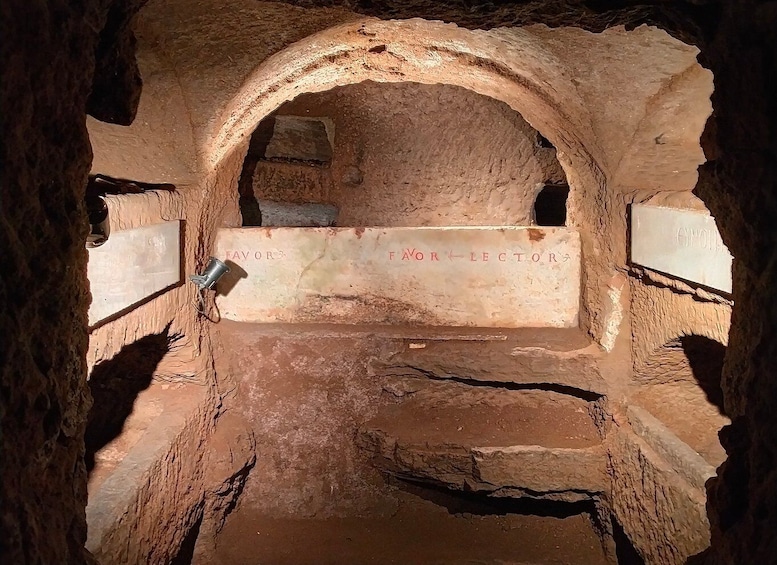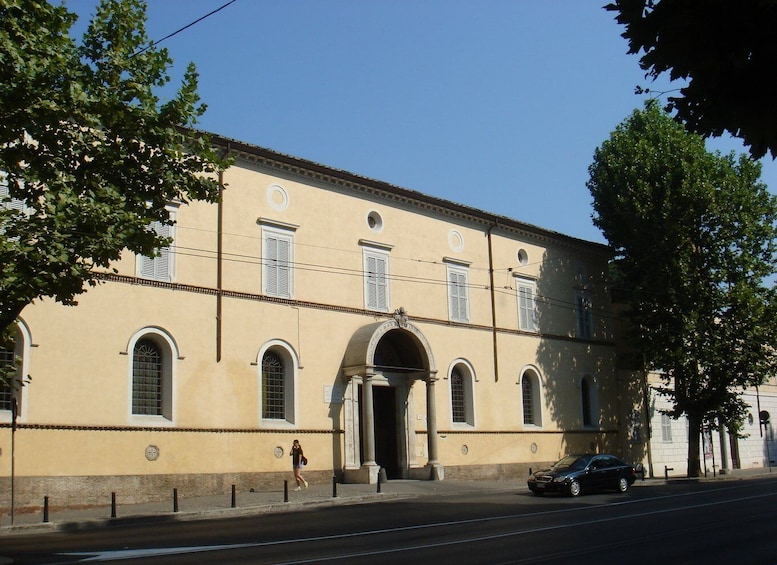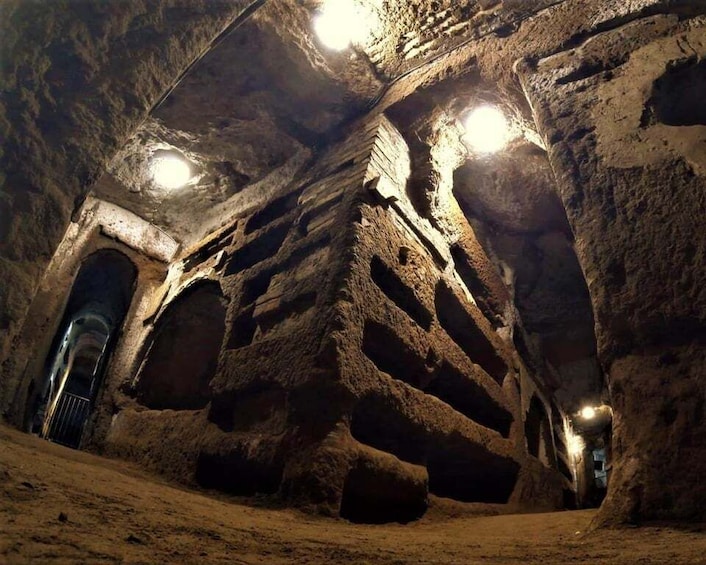Saint Agnes is a very famous and venerated Roman martyr: there are good elements to believe she was a martyr at the time of Decius or Valerian, even if some consider her a victim of the persecution of Diocletian.
She died when she was only 12 years old: Pope Damasus refers to a stake in which the saint would have thrown herself. After her martyrdom, the body of little Agnes was placed in a hypogeum owned by her family, on the left of Via Nomentana, where there was already a surface necropolis with individual tombs and mausoleums.
From this original hypogeum, with the insertion of the venerated tomb, a vast community catacomb network will soon develop underground.
The object of particular attention was the tomb of Agnes which at the time of Pope Liberius was decorated with marble slabs: one of these slabs is probably the one currently exhibited in the entrance staircase of the honorian basilica and which represents a young girl in prayerful attitude between two panels with geometric motif.
Pope Damasusalso intervened on Agnes's tomb: the inscription he dedicated to the martyr is now posted in the staircase.
The deep devotion that the Romans nourished over the centuries for the young martyr contributed to embellish her sanctuary with a series of buildings on the surface.
A short distance from the venerated burial of the martyr, perhaps in an imperial property, a basilica in the shape of a Roman circus with an atrium was built at the behest of Constantine (or Constance), daughter of Emperor Constantine and a great devotee of Agnes.
Honorius I raised the current basilica on Via Nomentana which is semi-underground, reachable from the majestic staircase; the interior, preceded by a narthex, has three naves, above which a women's gallery runs.
The mosaic in the apse is a splendid testimony of early medieval Roman mosaic art: it represents Agnes between Pope Honorius, who carries a model of the church in her hand, and, probably, Pope Symmachus.




